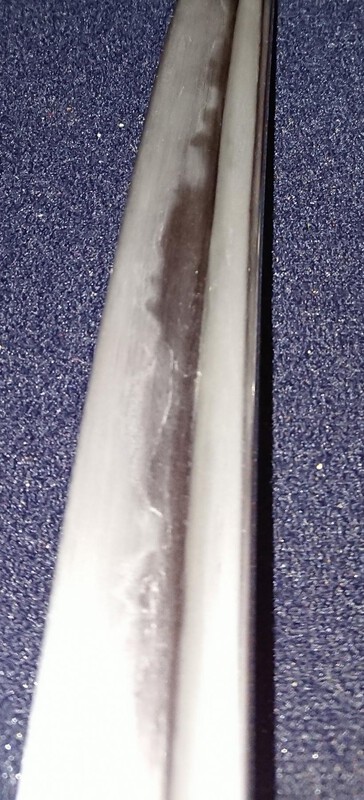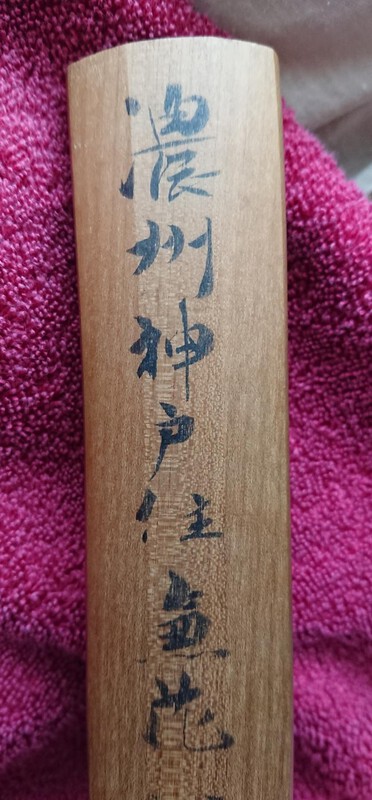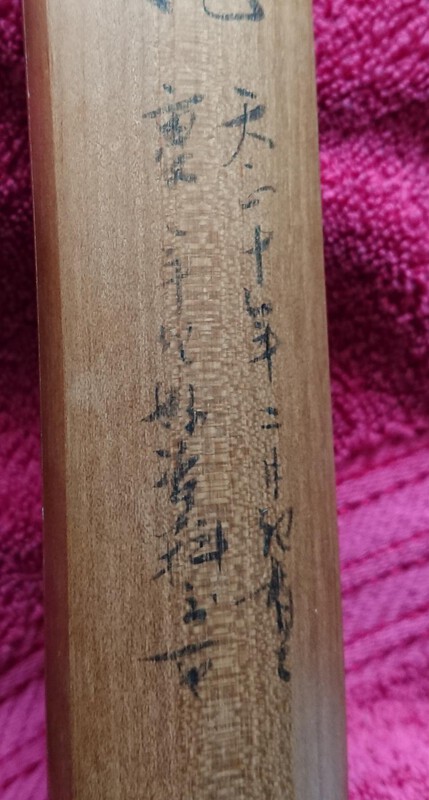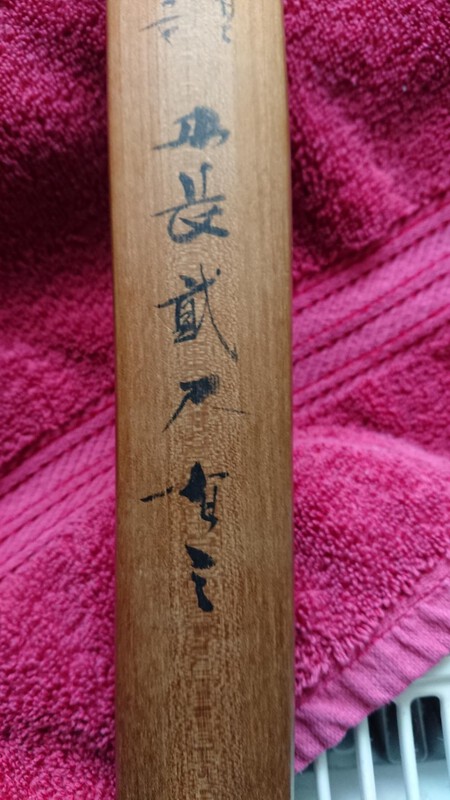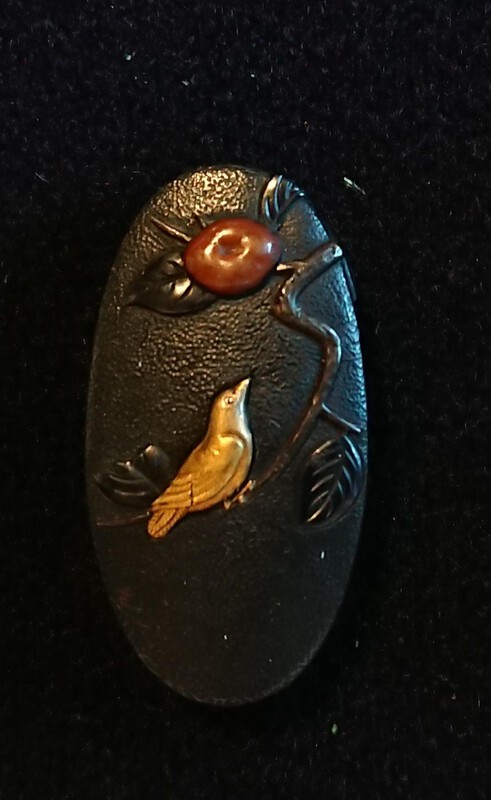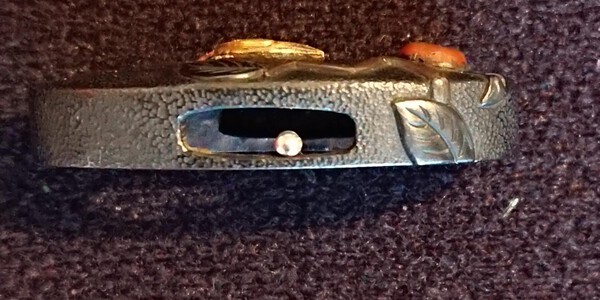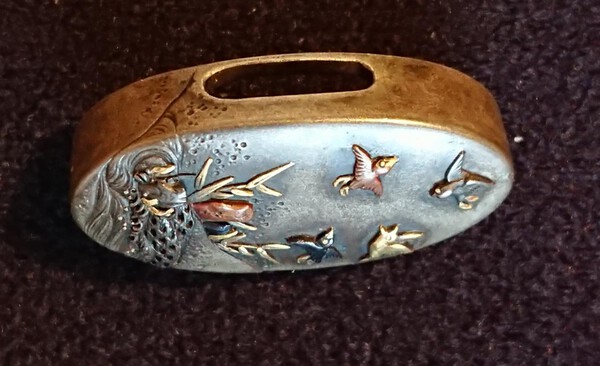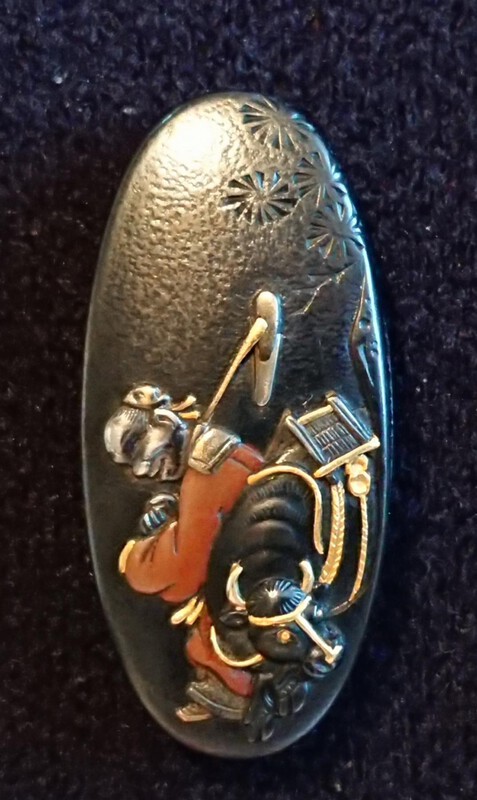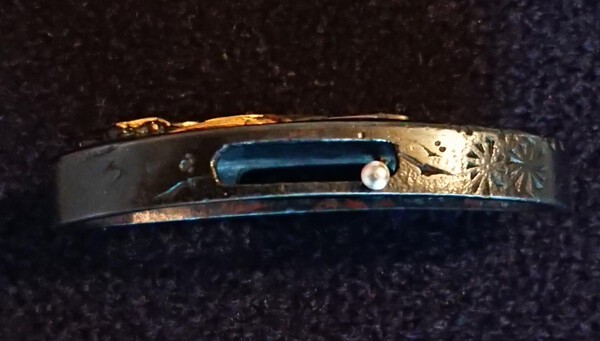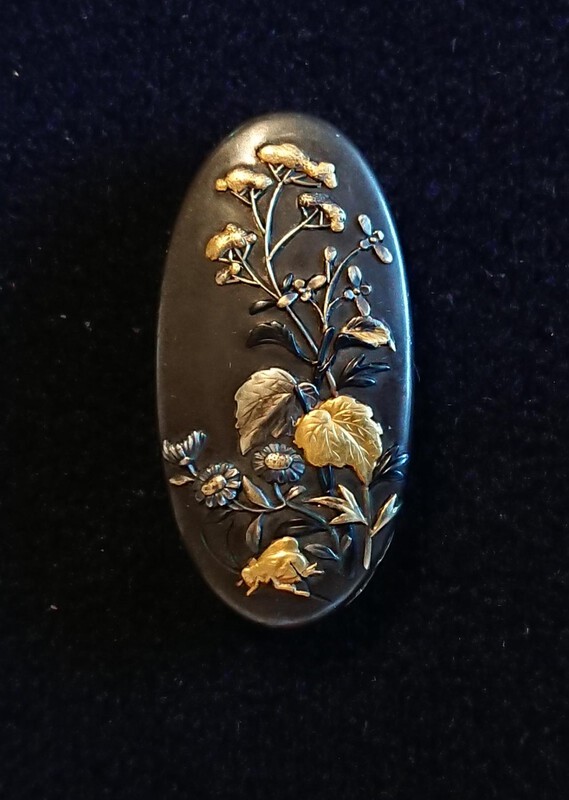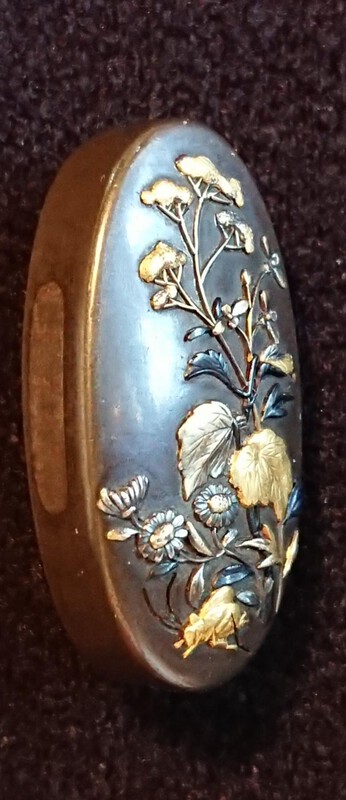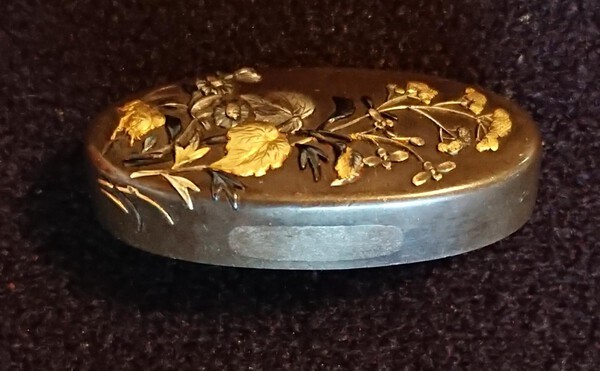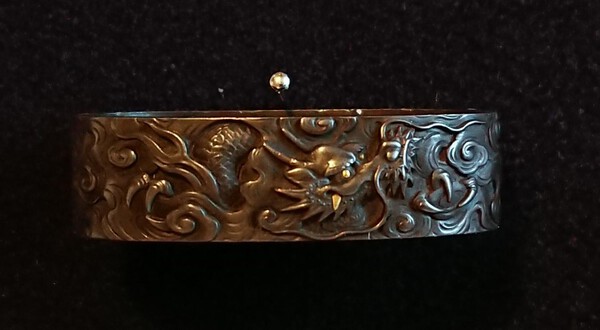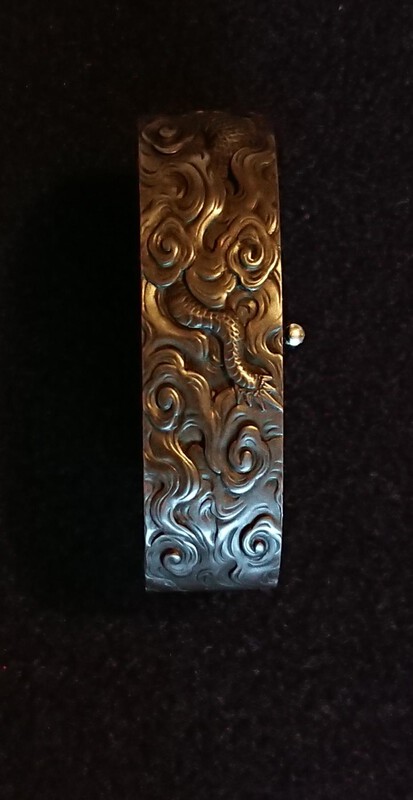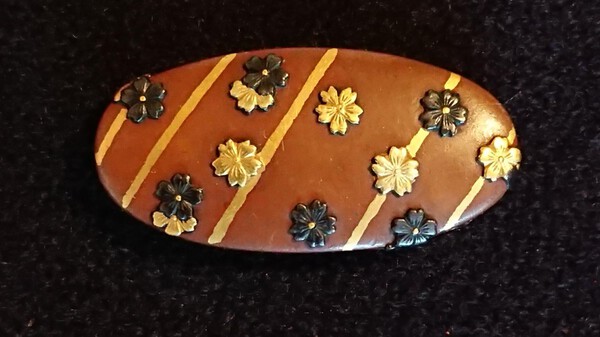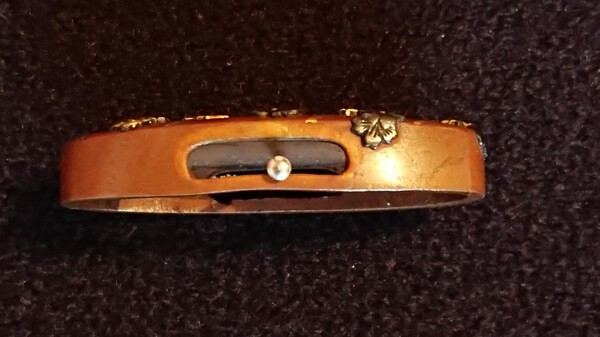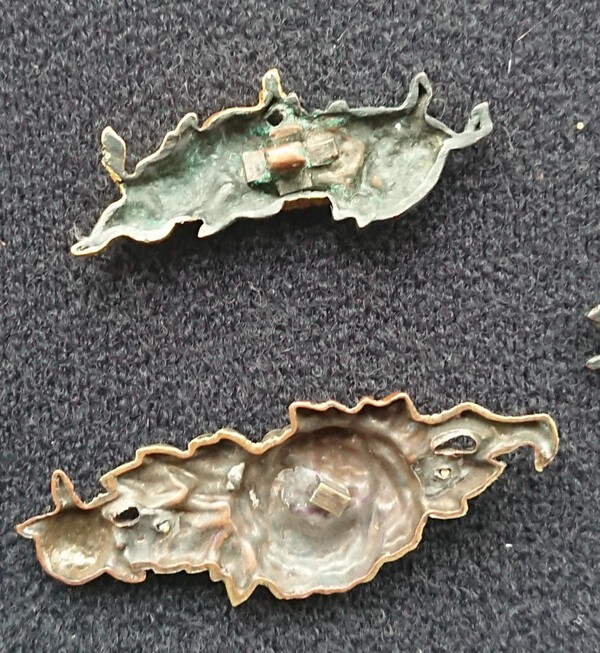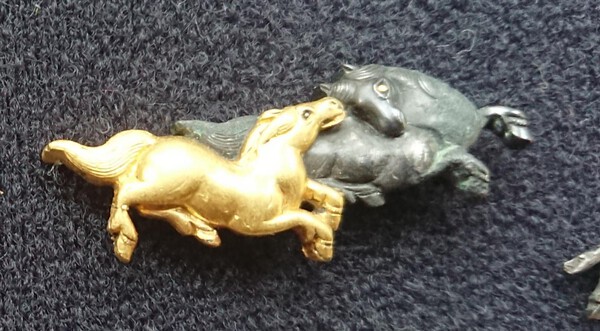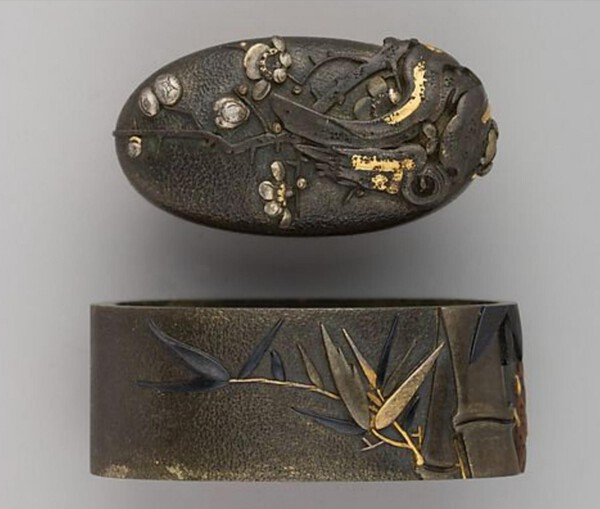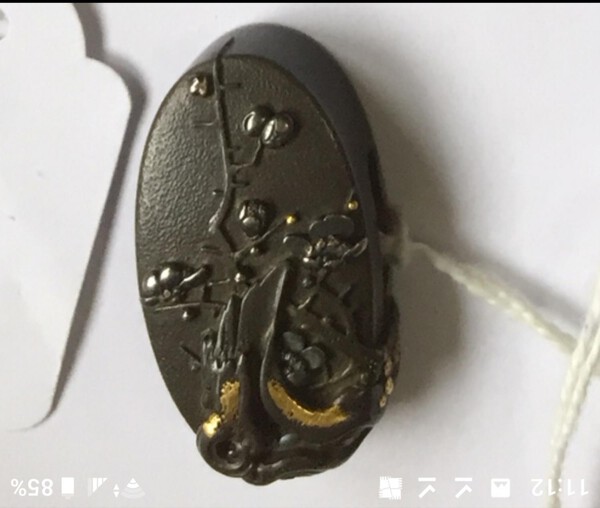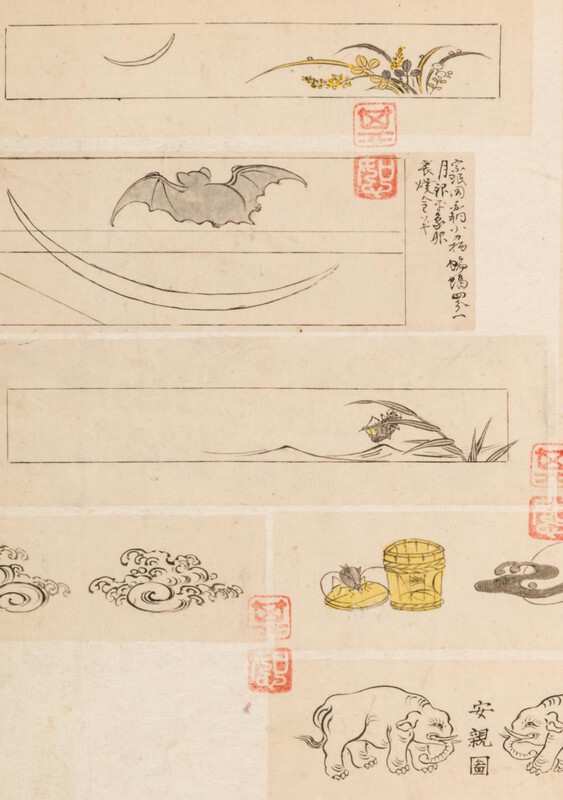-
Posts
950 -
Joined
-
Days Won
3
Content Type
Profiles
Forums
Events
Store
Downloads
Gallery
Everything posted by Babu
-
Gentlemen thank you you have been invaluable. Its on an old tachi cut down to handachi/O wakizashi.it's osuriage and has four mekugi ana in the new Nakago so it's been adapted to all the differing styles through the years one would guess. Regards Adam
-
Sorry more questions come to mind. Would that not be difficult and risky work on a heat hardened/toughened surface? If we osuriage a blade it must be heated in order to work the (old blade material) new Nakago. More so where the blade has been tempered? Also would the tempering process go right through to the other side on such a thick area of steel. I can see nie and nioi clear as day on the surface of the Bohi.image one and four show this. Regards Adam
-
A bit off topic but there is a set of near matching menuki on ebay UK for that set you have on the tsuka. At about £45 when I last looked. Regards Adam
-

Is the mei correct for the artist.
Babu replied to Babu's topic in General Nihonto Related Discussion
In my understanding this is ascribed to Soyo with kao but it's not as far as I can tell trying to copy its Kao is distinctive. It may be a much later generation or a school attribute piece. I cannot find any detailed reference. Regards Adam -

Is the mei correct for the artist.
Babu replied to Babu's topic in General Nihonto Related Discussion
Sorry Ray, I'm an idiot. Adam -
-
Hi can anyone with knowledge or reference books confirm this mei and a brief history or is it gimei please. Regards and thanks in advance Adam
-
Thanks Tanto. Very interesting. I'll pop it into the for sale or swap area. Regards Adam
-
I wanted to ask the more experienced members about the place in construction for Bohi to occur. In many swords I would imagine it comes after tempering so that the full strength and weight of the sword is offered up to the heat. So my question is. How can a deep Bohi exhibit obvious temper in the form of clear misty martensite thicker in places but all the way along the blades hi? Is it that the martensite developes deep into the metal so carving doesn't remove the temper ? Any thoughts? Apologies if this question has been raised before. Blade exhibits Hitatsura Hamon on masame. Regards Adam
-
Thank you very much for your translation. Regards Adam
-
Looks like there is a flaw that's encouraged machi-okuri to move it to under the habaki area and off the blade or am I imagining that?.regards Adam
-
Bazza could I suggest that your mei might be the ninth Generation YAS982 Musashi Bunka (1804-1818) the determining factor for this lineage is not in the Yasa so much, but in the tsugu kanji execution. Just a thought. This smith also used the art name Mototsugu 元繼. Regards Adam
-
Thank you the date is 1977 Regards Adam
-
I think a swapshop thread would be fantastic. Show your items and state what you're after specifically or open trade whatever you have "WHY".Not everyone wants money, I just like to move things around the collecting circles. Of course both parties need to be very open on potential returns out of respect and state location. Brian will this just give you a headache? Thank you Adam
-
Thank you. NARA kozuka trade value £600 purchase £500. Kogatana trade value £475 purchase £400? If these are ridiculous then let me know. I could do with perhaps some advice on if the mei does conform to the 11th Generation sample I showed middle row bottom. This is where I might come unstuck I may have overpaid for them. Offers of trades is so much easier for me. Regards Adam
-
Hi, would it be possible for anyone to break down into the five sections exactly what this sayagaki is stating? It's Noshu Ju xxx kanemitsu. I cannot seem to identify much else its too "freehand". I understand the Sato kanzan kao. Thank you Adam
-
No not really I'm looking to trade for something, is this allowed? regards Adam I wouldn't have a clue about values.
-

The Fuchi/Kashira Orphanage
Babu replied to Nihontocollector19's topic in Fittings/Tosogu/Kodogu/Koshirae
Three more for now. 4.A dark brown shibuichi ishime kashira on which is depicted in a high relief ioroye of shakudo, copper and gold a golden bird perched on an apple tree beneath a copper apple. 19th century Hamano work. 5.A sentoku ishime kashira on both the hira and koshi of which copper, Shakudo and gold sparrows fly over a water scene with kebori water, low relief gold bamboo and sentoku gambions. 19th century Hamano work. 6. A kashira in a dark chocolate brown shibuichi ishime. In an iroye of copper, silver, Shakudo and gold is depicted an oxen cart and accompanying driver beneath a katakiri pine tree. 19th century Hamano work. Happy to make up your set of you make up mine. Or trade. Regards Adam -

The Fuchi/Kashira Orphanage
Babu replied to Nihontocollector19's topic in Fittings/Tosogu/Kodogu/Koshirae
A few odd bits and pieces for matching up or trading. First three 1.A kashira on polished chocolate brown shibuichi on which is displayed a group of autumn flowers and leaves in a delicate, low relief incrustsion of shibuichi, Shakudo, silver and several shades of gold. For some reason the shitodome ana have been carefully sealed. 2.A fuchi: on a chocolate brown polished shibuichi is depicted in a delicate low relief, a Dragon amidst styalised waves. It has golden eyes and a golden fang. Inscribed on the tenjō MASACHIKA. Haynes lists 11 artists using these kanji. This one is Bushu Masachika (see Edward wrangham collection tsuba) Bonhams. 3.A polished copper kashira in low relief incrustation are gold hon-zogan diagonals with scattered sakura blossoms, some of which are gold and some Shakudo with a gold centre 19th Century Mito work. If you have a match please PM me and we can decide which way to go. Regards Adam -
Very interesting George and thank you again you have helped me immeasurably. In the second month of 1488, the poet Sogi (1421-1502) and his major disciples Botanka Shohaku (1443-1527) and Saiokuken Socho (1448-1532) composed one of the most famous of all renga to honor the memory of Emperor Go-toba (1180-1239), whose spring tanka written at Minase (the site of his detached palace) served as their initial inspiration. Several verses refer to an insect in the grasses or chirping on a leaf so this makes good sense. I would love to find more of his work, but he seems to have not been very prolific. Regards Adam
-
Hello I'm not sure if anyone has any interest but I've decided to move on a few oddments and I'm open to trades or offers. Kozuka: 9.7 x 1.4cm On a chocolate brown polished shibuichi base, a low relief carving of a deer (Doe) and its Fawn with raised carving of the heads and ear of both to give a 3 Dimensional aspect. The image extends on to the mune-gata. The deer has Gold antlers, both have gold eyes and delicately textured coats and markings . The reverse is of polished Shibuichi. Possible it is made by Sugiura Joi (1701 - 1761) who specialised in Kozuka in this style or another of the very few Nara craftsmen. The school geniology is the last image. Came out of Japan late 1800's to early 1900 as part of the WA Young collection. Passed on to John in 1955. Never been to shinsa so worth considering. Also accompanied by a tempered midare based on suguba polished kogatana, quite heavy when compared to others I have and with kiku mon by the smith Yasutsugu.YAS984 康繼 Musashi, Ansei (1854-1860)(11th Generation) This lineage of swordsmiths were patronised by the Tokugawa clan ergo the permitted use of tokugawa ieyasu kanji for Yasu 康 and the Aoi Mon. Hawleys designated this smith as Chu jo Saku. Whilst many kogatana "mei" are fantasy and unlikely Smith made and signed, this mei seems quite accurate for the 11th generation of swordsmith (Middle row bottom) . The Nakago is finished in Kesho Yasuri. I would appreciate any opinions on this please. Both items are certainly of excellent quality in my opinion although the images don't do them justice. I admit the kozuka has a certain nieve approach. Thank you Adam PS I hope this is within the rules.
-
Thank you George the post has been edited. Regards Adam
-
Menuki missing their partners. The equine set have minor rubbing to Shakudo on horses shoulder and general use marks. Heavy gold overlay. Could probably go with a whip or saddle or maybe a single horse. Quite a bit should pair with this one. £50 The floral menuki is large and of reasonable or mediocre quality.£35 Happy to buy the orphans that may compliment these as well. Thank you for looking Adam
-

The Fuchi/Kashira Orphanage
Babu replied to Nihontocollector19's topic in Fittings/Tosogu/Kodogu/Koshirae
I have a kashira that's lost its fuchi. It is shabuichi and Shakudo with silver and gold. Identical to the set in the metropolitan museum by Marukawa Hiroyoshi (worked around early 1800's died 1841 or 1842) who worked out of Mito. I am looking for its fuchi or as close as possible or will offer it up to make up your own set. Thank you Adam -
Hi all, this is my first post and it's relating to an item of Fuchi and kashira. The Fuchi is (if I'm correct) signed Shinryusai Ranzan Tsuneyuki Carved. Description to me is: Fuchi: A Narrow tsuboguchi - gata in polished chocolate brown shibuichi of a delicate Kebori landscape in low relief. Shibuichi bamboo on which is displayed the underside of a shakudo and gold firefly (hotaru) (thank you George) Inscribed on the tenjo in Sosho writing shinryusai Ranzan Tsuneyuki Carved. Kashira: Polished, on a chocolate brown shibuichi kashira upon which is an Iroye of copper, shakudo, silver and Gold is Fukurokuju seated upon his oxen. The beast has a silver flower in its harness. Shakudo Shitodome are fitted. It was passed on to me as an unrecorded maker yet research indicated that this artist may have changed his name many times and I managed to find in the Metropolitan museum a hand drawn book of metalwork designs by (or I would expect copied by) Ranzan Tsuneyuki. Whilst going through the pages I found the design for this fuchi. It didn't show the kashira so I think there must have been some form of poetic licence in what the artist decided to pair with what selecting fuchi then looking through designs to see what would work on this occasion and perhaps for this client. Any thoughts on this being a possibility? Thank you Adam (please forgive the poor images)


